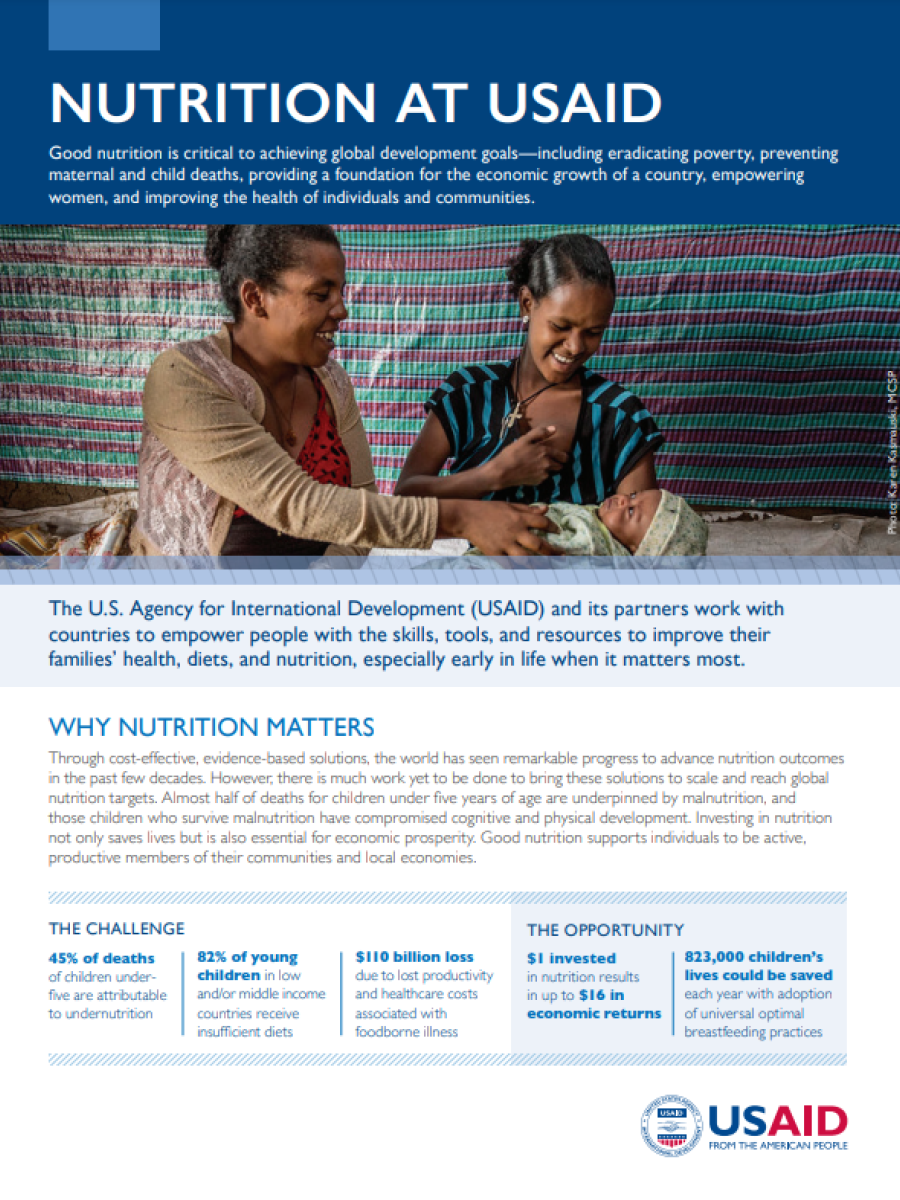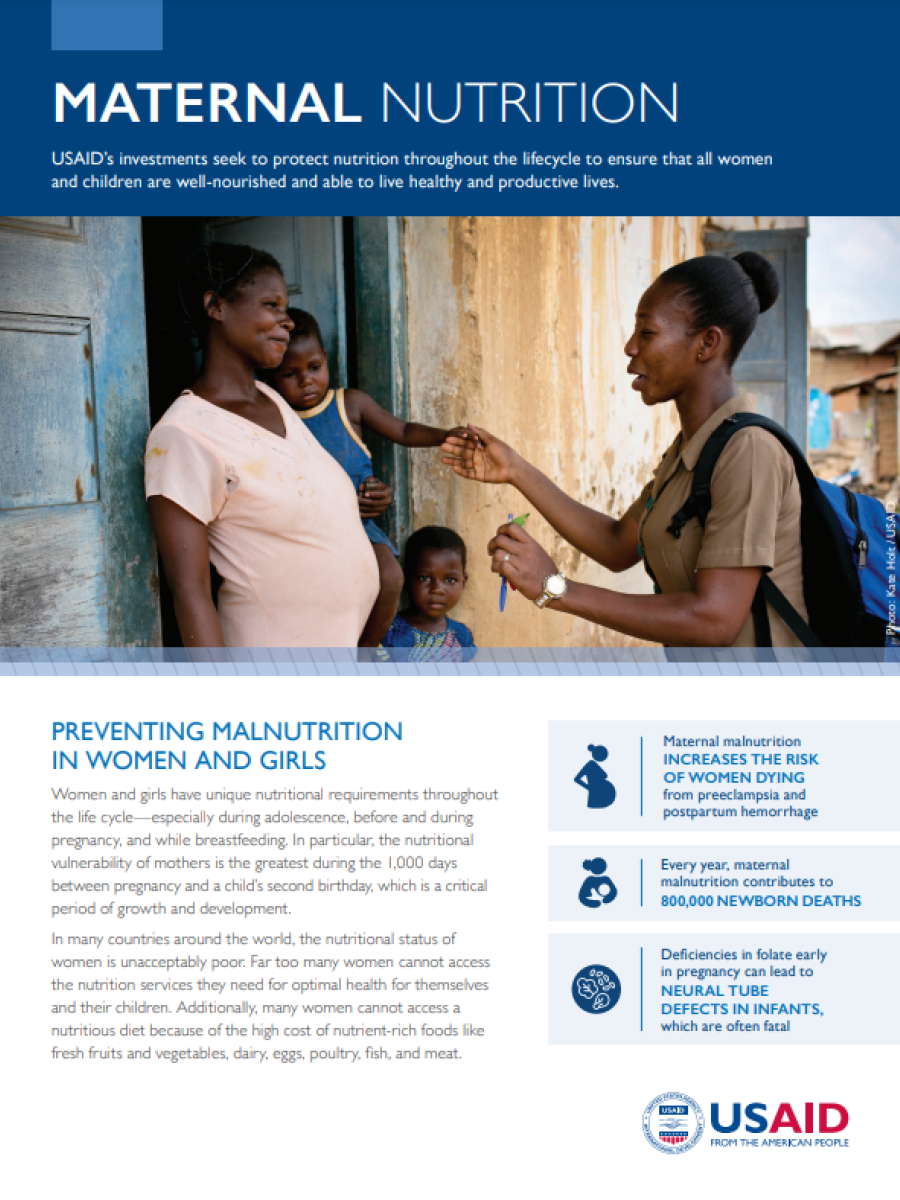USAID Nutrition Resources
Learn more about our work to support children, families, and communities to access nutrient rich diets and improve their nutritional status through factsheets, publications, and strategy documents.
Factsheets
Photo

Photo

Photo

Photo

